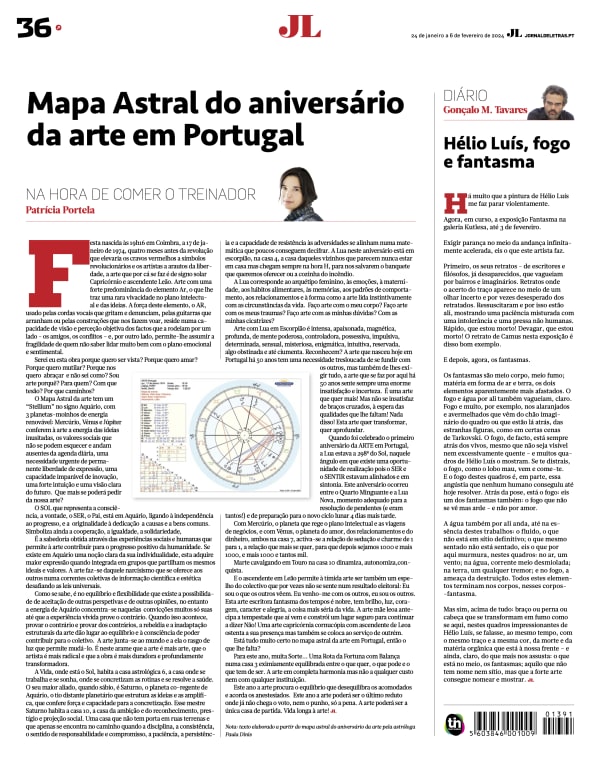Hélio Luís is the theme of the chronicle of Gonçalo M. Tavares in the current issue of Jornal
For a long time now, Hélio Luís' painting has made me stop violently.
Presently, underway, the exhibition Fantasma at the Kutlesa Gallery, until February 3rd.
To impose inaction amid an infinitely fast-paced motion, that's what this artist does.
First, his portraits - of writers and philosophers, already disappeared, who wander through neighbourhoods and fantasies. Portraits where the accuracy of the stroke emerges in the midst of the uncertain and sometimes desperate gaze of those portrayed. They resurrected and so are there, displaying a patience mixed with unhuman intolerance and haste. Hurry up, I'm dead! Slow down, I'm dead! The portrait of Camus in this exhibition is a good example of this.
And then, now, the ghosts.
The ghosts are half body, half smoke; matter in the form of air and earth, the two seemingly most distant elements. Fire and water also roam around, of course. Lots of fire, for example, in the orange and reddish colours arising from the painting’s imaginary floor or standing in the background, behind the strange figures, as in certain scenes by Tarkovski. Fire, in fact, is always behind the living, even if not visible or excessively hot - and many of Hélio Luís' paintings show this. If you lose focus, the fire, like the big bad wolf, will come and eat you. And the fire in these paintings is, in part, that anguish that no human has managed to resolve. Behind the pose, is the fire: there’s one of the ghosts as well: the fire unseen, that burns yet - and not out of love.
Water is there too, even in the essence of these works: the fluid, the element without a certain place; a body sitting and not sitting, there’s what whispers here, in these paintings: in the air, a wind; in the water, a half-mad current; in the earth, some kind of tremor; and in the fire, the threat of destruction. All these elements end up in the bodies, those ghost-bodies.
But yes, above all: arm or leg or head becoming smoke, as if here, in these impressive paintings by Hélio Luís, one would speak, simultaneously, with the same color and the same stroke, about death and the organic matter lying in front of us - and also, of course, about that which frightens most; the stuff between, the ghosts; the thing without a name or place, that only strong art can name and show.




